19 Creative volunteer recruitment ideas you should try


If volunteers make up a large percentage of your nonprofit’s team, you know how important their support and dedication are in your efforts to achieve your mission. However, 26% of volunteer leaders noted that recruiting volunteers was a top challenge for their organization in 2024.
We want to help your nonprofit succeed and make volunteer recruitment the best part of your job. This comprehensive guide offers insights and tips on recruiting outstanding volunteers for your nonprofit’s events and programs.
We’ll cover the following topics:
Every nonprofit is unique, meaning volunteer recruitment strategies that work for some organizations aren’t always as effective for others. As you read through this guide, note the ideas you think will work best for your unique target audience.
For many nonprofits, volunteers are the face of the organization. They actively engage with the community, providing services, collecting donations, and working to help the nonprofit achieve its mission and goals.
Volunteer recruitment is essential because it can offer your nonprofit tangible benefits and long-term support for advancing its mission. Specifically, volunteers provide the following advantages:
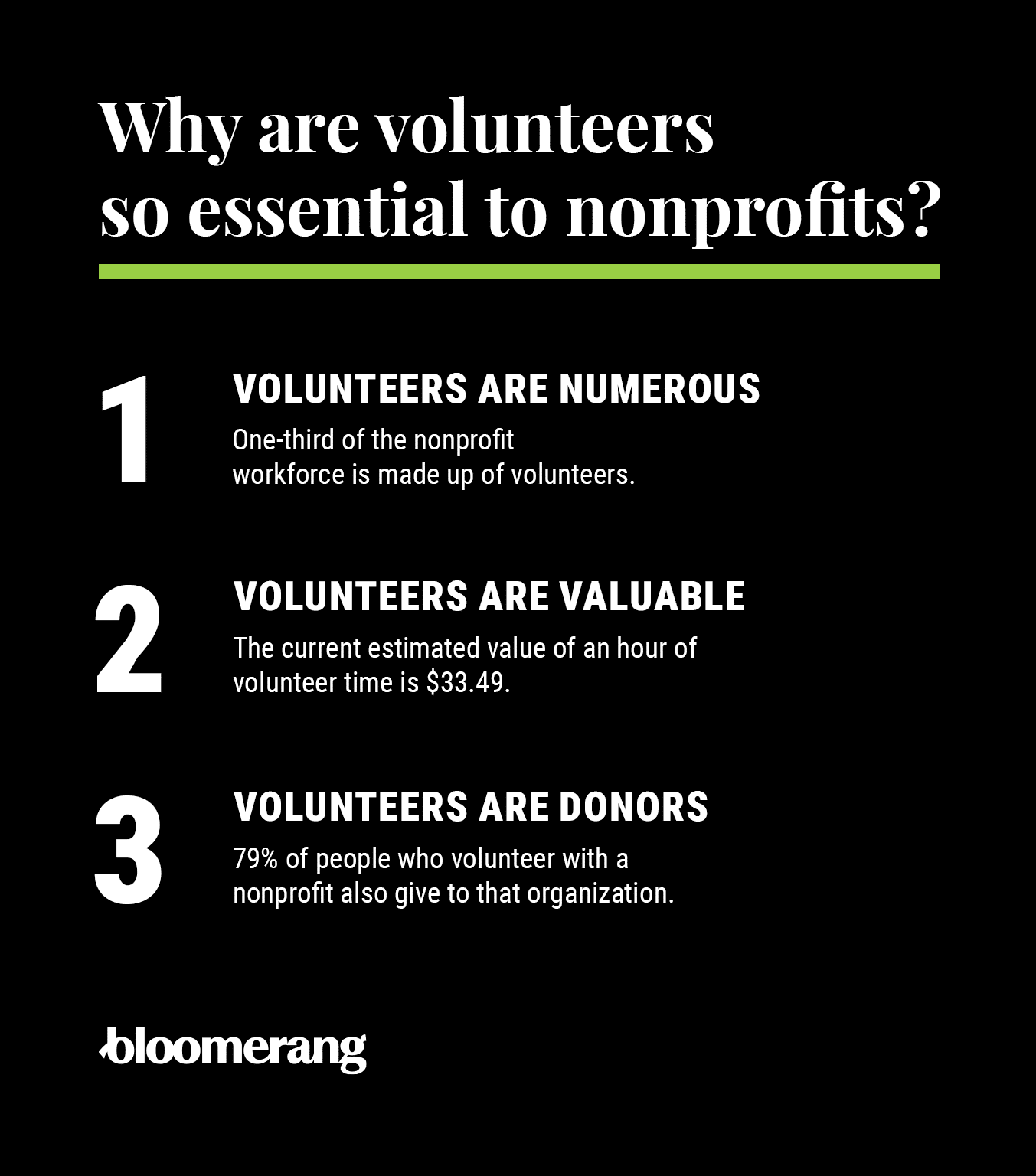
Volunteers offer valuable skills, time, and enthusiasm to ensure nonprofit programs and events can take place. They’re long-term partners who contribute significantly to the success of the nonprofits they support.
A volunteer recruitment plan is a strategy for attracting and recruiting new volunteers who have skills and interests that align with a nonprofit’s core needs.
An optimal volunteer recruitment plan should include the following components:
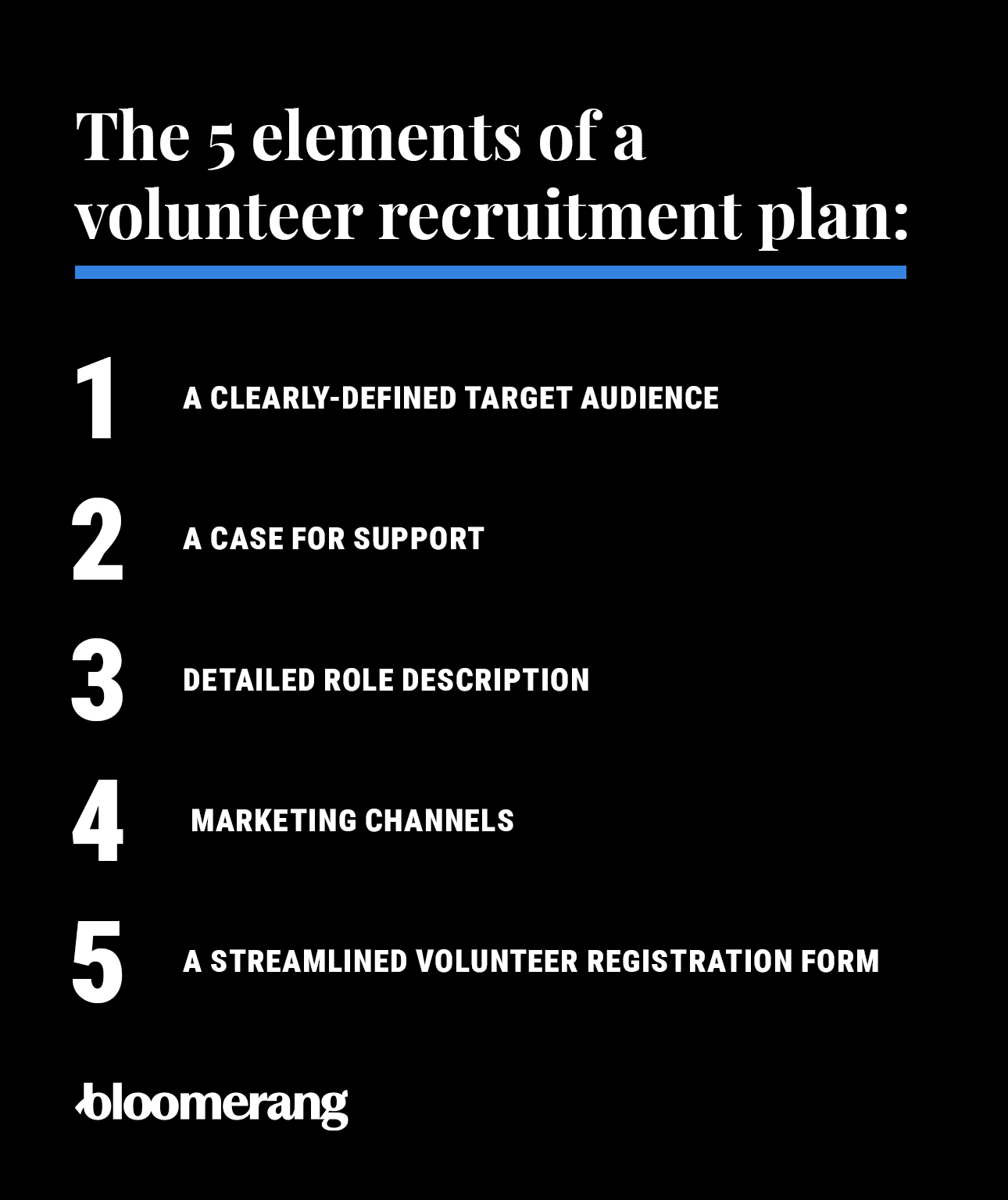
We’ll examine these elements more closely later, but this is a basic overview of the points you should include when developing your volunteer recruitment plan.
Dedicated volunteers come from all walks of life and backgrounds. Understanding which groups are most likely to get involved in your efforts is key to recruiting the right people.
Here is a quick list of volunteer demographics to consider targeting in your volunteer recruitment approach, along with ways to better meet their needs:
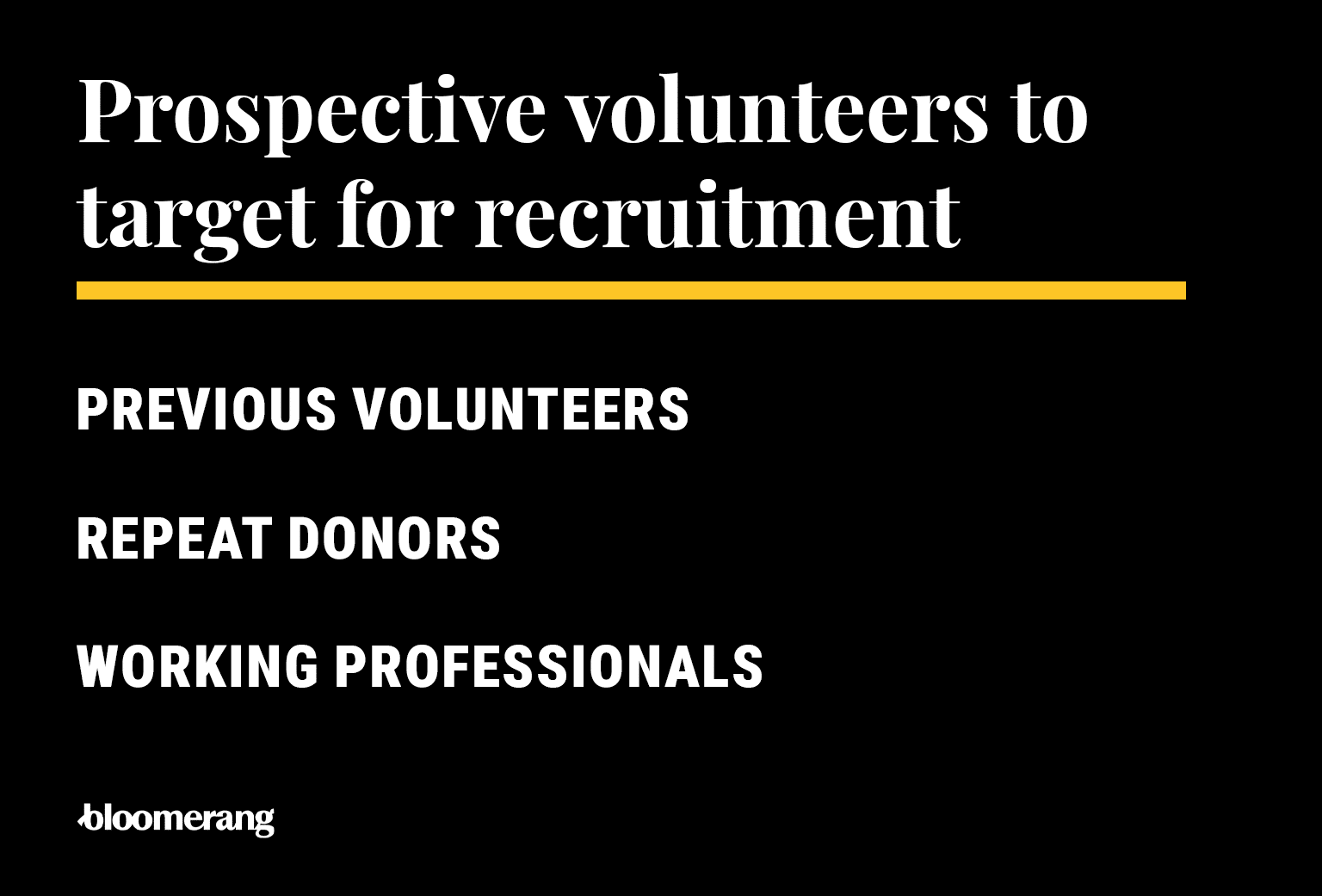
In your volunteer management solution, you may have profiles for volunteers who have not actively participated in programs or events in a long time. These volunteers are often considered inactive and are generally underutilized in recruitment efforts.
While it’s always great to try and encourage active volunteers to sign up to join new opportunities, it’s also a fantastic idea to do that same thing for your inactive volunteers.
Consider segmenting or filtering your existing inactive list of volunteers in your volunteer management solution by interest, skills, or other attributes relevant to the roles you seek to fill. Then, email them inviting them to sign up to volunteer for your new opportunities.
This will help you re-engage them and can be the first step in converting them into active supporters and donors.
Many nonprofit organizations strategize how to convert volunteers into donors. But what about getting your donors involved in hands-on volunteer work? Your donors are some of your nonprofit’s most dedicated supporters, and many will leap at the chance to make an even larger impact.
In all your donor newsletters and updates, include easy sign-up links to new volunteer opportunities and information about the purpose and progress of your volunteer program.
Working professionals and self-employed people already highly trained in their fields can be a gold mine for volunteer recruitment. These volunteers offer specialized skills to help fill gaps in your operations. You can find these volunteers through word-of-mouth advertising or searches on social media platforms like LinkedIn.
To find volunteers with skills and preferences matching your volunteer opportunities, you must communicate what each volunteer role entails. This way, people know what they’re getting into, and there won’t be any surprises.
Clearly outline everything a potential volunteer should know about a specific role or opportunity before they agree to work. Cover the following components in your role descriptions:
Include these descriptions on all volunteer recruitment materials, such as your landing page and informational social media posts.
Informational sessions take your role descriptions a step further by giving volunteers more background information about your cause and details about each role. Plus, you can introduce yourself to prospective volunteers and start forming personal relationships that may turn into long-term partnerships.
Consider hosting regularly occurring information sessions, such as on the first Wednesday of every month. These sessions could be held in person, virtually, or via a hybrid format. Add the following components to these meetings:
Additionally, leave plenty of time for questions at the end of each session to answer remaining inquiries from prospective volunteers.
Your volunteer application forms should collect the relevant information you need to do a preliminary screening of your candidates, such as:
These application fields should sync up with the role requirements you have created in your volunteer management solution. Doing this lets you quickly filter your applications by roles and send suggested volunteer roles to new supporters based on their skills and interests.
A multichannel marketing strategy can help you reach a wider online audience. Promote your volunteer sign-up page on digital channels such as:
Ensure your volunteer sign-up form is mobile-friendly by keeping the page simple and short and making buttons large and easily clickable. This ensures that the page will be easy to navigate whether visitors use mobile devices or desktop computers.
Word-of-mouth advertising leverages your existing network of supporters, making it a powerful way to recruit more volunteers. Ask your existing active volunteers to invite their friends and family to volunteer with them. You can simply ask them to share your social media posts to promote your volunteer opportunities with their network.
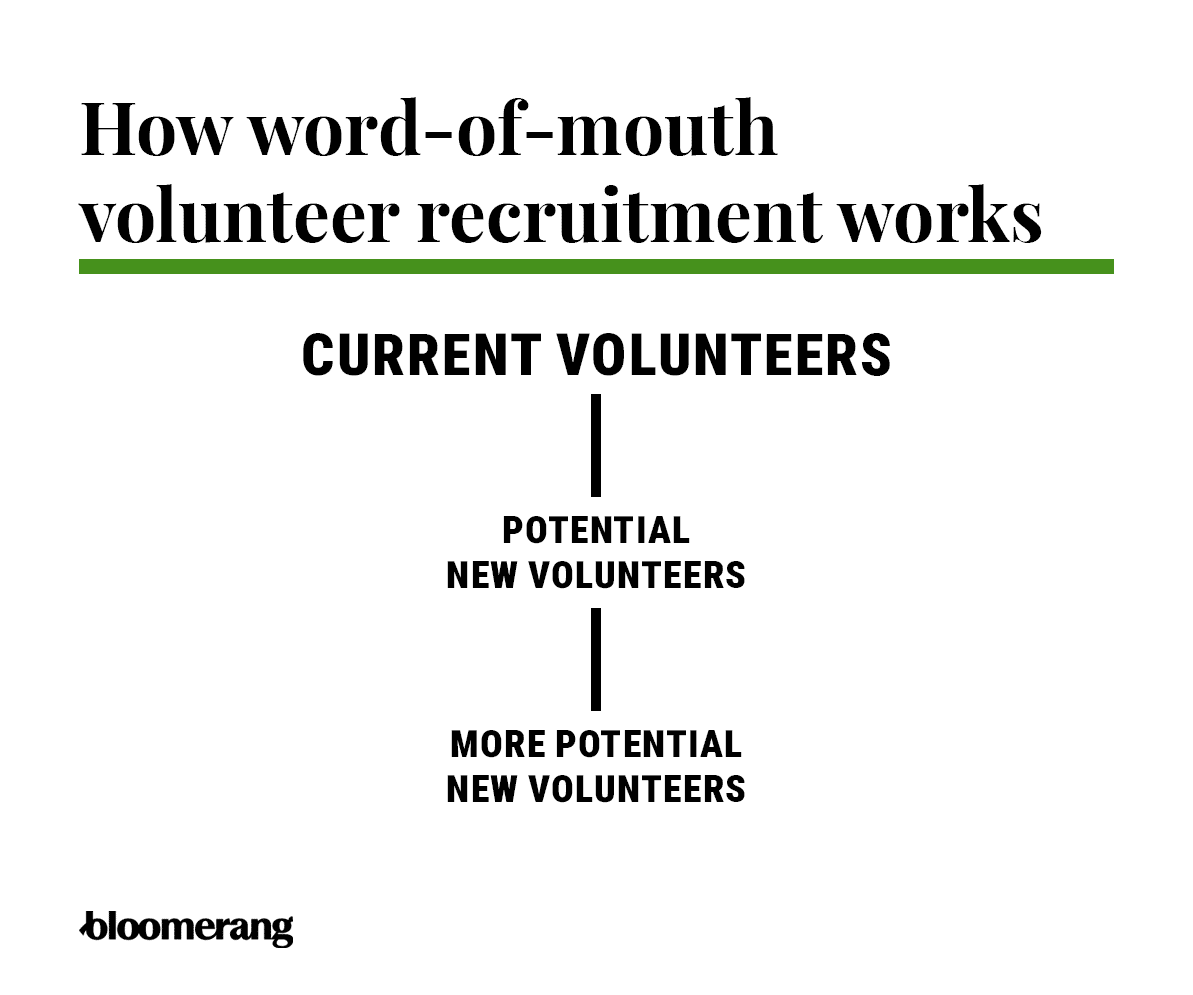
To help motivate your volunteers, consider offering a prize for the volunteer who recruits the most people, such as a free t-shirt or a gift card to a local restaurant.
Every year, more corporations and businesses invest in corporate volunteer programs for their employees. This presents an opportunity for your nonprofit to partner with businesses eager to supply dedicated volunteers to nonprofit organizations.
Recruiting corporate volunteers is a great way to bring in reliable and skilled help because they are often reimbursed for their volunteer work by their employer (such as through paid days off). These volunteers are often also eligible for volunteer grants, which can increase donations for your nonprofit through corporate-sponsored contributions.
Fellow community organizations, such as civic clubs and associations, can be excellent resources when your organization needs volunteer support. Clubs and associations often require their members to participate in a certain number of volunteer hours, and your organization could help members meet their personal goals.
Volunteering can be a great way for members to grow their skills. For example, let’s say you run a volunteer program at an immigrant justice center. Your organization could partner with a lawyer’s association to work with immigration attorneys and benefit from their expertise. In exchange, the lawyer you partner with can grow their skills and receive the intangible benefits of helping the community.
Highlight these benefits in your email, letter, or social media outreach to these organizations. Meet with their leaders to outline the benefits of forming long-term partnerships.
In addition to promoting volunteer opportunities on social media sites, plenty of other websites function as virtual job boards for volunteer opportunities. You can post your role descriptions and application forms on these sites to reach a general audience of prospective volunteers who want to get involved in the community.
Helpful websites include:
Look into websites that cater to your specific area as well. For example, nonprofits in the Atlanta area can share opportunities on Hands On Atlanta.
Local media outlets such as newspapers, magazines, radio, and TV stations can help spread the word about your open volunteer roles. Contact these outlets to connect with a staff member or send press releases.
Keep in mind that journalists and reporters want to know when something newsworthy is happening at your nonprofit. Hiring a new major gift officer may be internally exciting for your organization, but it doesn’t necessarily rise to the level of need-to-know information for the community.
Instead, share stories that have the following criteria:
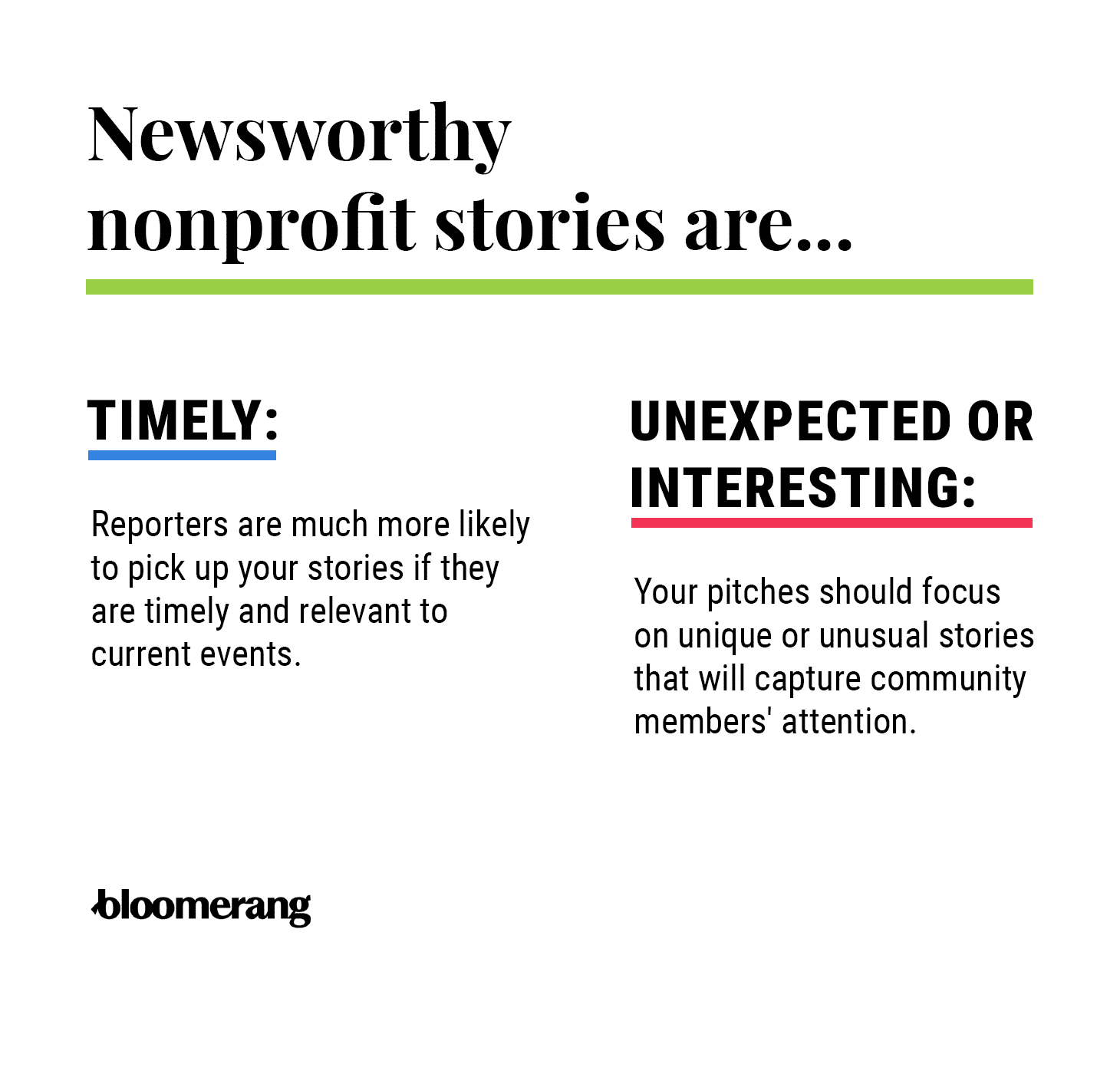
Reporters are much more likely to pick up your stories if they are timely and relevant to current events.
For example, if you work for a disaster relief organization, you could pitch a story about how your nonprofit’s volunteers are leading cleanup efforts throughout the community. Or, you could provide journalists with details for your organization’s largest annual event, such as a 5K or festival, so community members know when and where the event will occur.
Feature stories can be a great way to highlight the culture of your volunteer program. However, your ideas should focus on unique or unusual stories that will capture community members’ attention.
For example, you could pitch a story about a volunteer who just turned 100 and still participates in your program weekly. Or, perhaps your volunteers helped devise a new watering system to water your community garden much more efficiently. You could invite reporters to come to view the new process and share information about how you encourage volunteers to use their creativity and unique skills to support your mission.
No matter what types of stories you share, provide journalists with the opportunity to take photos and videos and get direct quotes from volunteers who are willing to share.
Friendly competition can be a significant motivator for volunteers. Gamifying your volunteer program involves adding game-like elements to turn volunteering into a head-to-head competition. These elements can include:
Spotlight top volunteers on your social media posts so prospective volunteers can understand how your organization works. They may be drawn in by the challenges and prizes you offer, so make your opportunities as fun as possible.
Along with gamifying your volunteer opportunities, the incentives and prizes you offer to volunteers should be as enticing as possible. These rewards may include:
Send surveys asking current volunteers for feedback about which incentives or prizes they’re most excited about.
When creating your volunteer opportunities and recruitment approach, consider the needs of people who don’t drive or have limited mobility. Ensure that your volunteer workspace is accessible for individuals with walkers, crutches, wheelchairs, and other types of mobility equipment. Have accessible parking available, and be sure that everyone honors those spaces.
Consider having a team member schedule transport for those who may have difficulty getting to your volunteer opportunities. Your team can coordinate this on a circumstantial basis, or you could have a van service or other carpooling arrangement in place. The transportation coordinator may also arrange for someone to meet groups of volunteers at central locations and drop them off at your organization’s volunteer site(s).
How you thank your current volunteers can significantly affect how appealing your volunteer opportunities are to prospective supporters. When prospective recruits see your efforts to make volunteers feel welcome and valued, they’ll feel more compelled to get involved.
Volunteer appreciation ideas run the gamut, but here are a few of our favorite options:
All volunteers should receive regular updates about what their support does for your mission. For example, let your animal shelter volunteers know how many dogs they helped find new homes at your last community adoption event.
New volunteers may be more likely to join your organization when they see that you offer a variety of ways for volunteers to go above and beyond with their involvement. Offering a clear pathway to volunteer leadership opportunities is an effective way to get volunteers excited about participating in your program long-term.
For example, you could offer a training program for long-term volunteers, where they can learn the new information and skills they need to host volunteer sessions or events independently. Provide these volunteers with plenty of support to help them get comfortable with their advanced roles and responsibilities.
Asking for feedback can help you build a better volunteer experience that attracts new supporters. It can also help you form stronger relationships with current volunteers and give them the chance to have their voices heard.
The best volunteer surveys are targeted at answering a specific question your nonprofit has or reaching a goal. You can ask recruitment, satisfaction, and/or engagement questions to get to the core of what volunteers think about your organization.
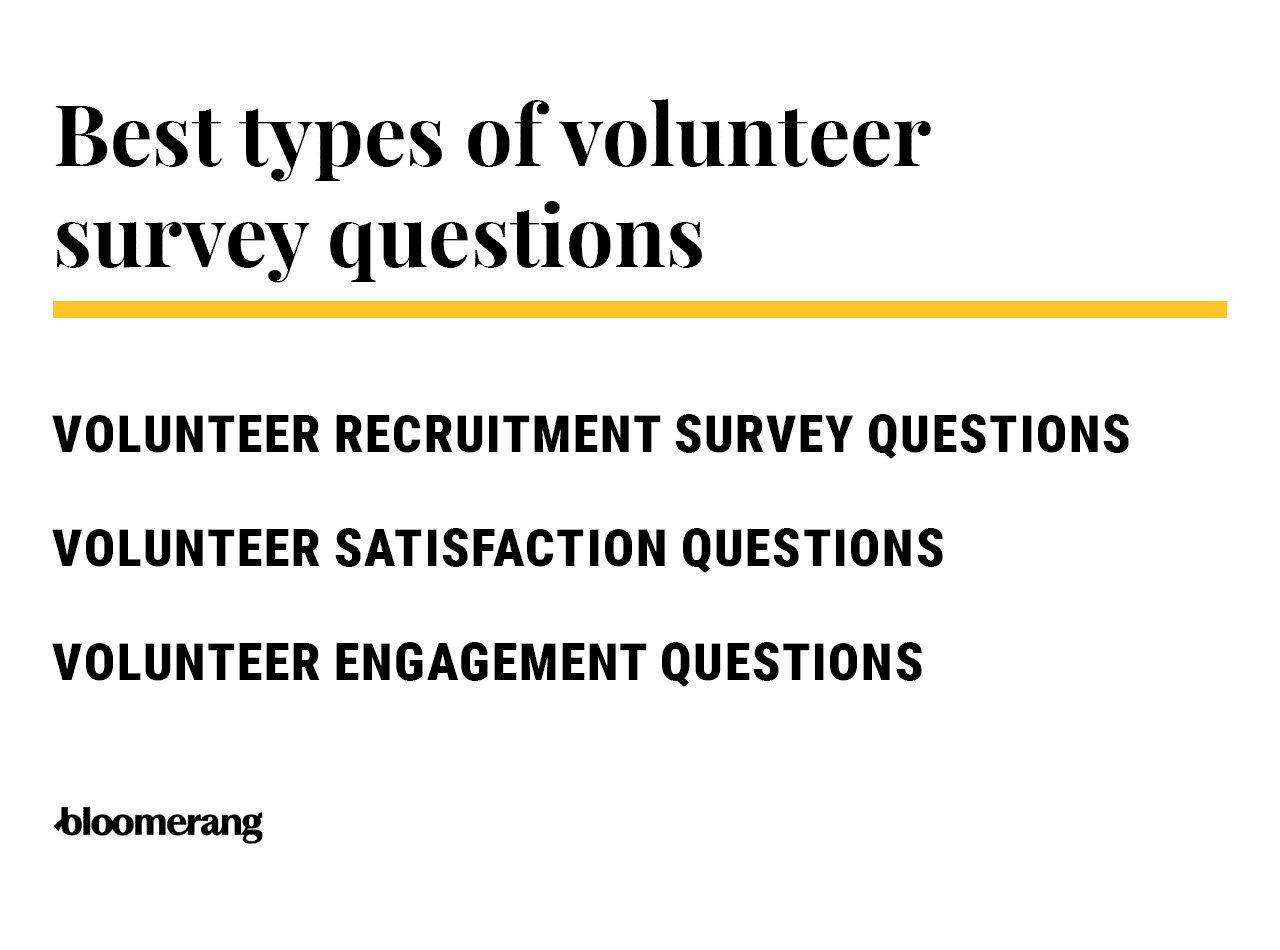
Send surveys with questions like:
Follow up to thank volunteers for their responses and inform them about any changes you’ll make to your program to incorporate their feedback.
Make weekend, evening, and short-term opportunities available and have volunteer spaces open for drop-ins. This can help busy working volunteers fit your activities into their schedules.
Depending on the nature of your volunteer work, you could also offer virtual volunteer opportunities to supporters who want to help from home. These could include:
Promote these opportunities across your digital marketing channels to show interested potential volunteers that they can still participate in your program even if they don’t have much free time.
Young volunteers are an often untapped source of valuable volunteer support for nonprofits. Teenagers volunteer 2.4 billion hours annually, worth $34.3 billion to the U.S. economy. Young people are passionate about getting involved in their communities and want to show their support for causes that are meaningful to them.
With that in mind, your nonprofit can partner with the following organizations to recruit more youth volunteers:
Even though they’re younger and less experienced than adult volunteers, youth volunteers can support a wide variety of causes, from community gardening to food sorting, creating care packages for people experiencing homelessness, and tutoring younger students.
Volunteer recruitment software is a digital tool that allows volunteer coordinators to manage every aspect of recruitment, from marketing to new volunteer onboarding, in one system. Instead of having to balance a variety of disconnected forms and spreadsheets, volunteer recruitment software provides access to all necessary information and tools at your fingertips.
For example, Bloomerang Volunteer offers nonprofits all the tools to scale up volunteer recruitment in one convenient and intuitive platform. Our solution enables organizations to:
You can also use Bloomerang Volunteer to manage end-to-end reporting and track recruitment metrics to evaluate the effectiveness of your recruitment strategy.
Undoubtedly, your volunteers are important for your programs and events. This dedicated group of individuals ensures your organization meets its goals and mission.
That’s why investing in the right volunteer recruitment strategy for each program is important to ensure you attract the right people for the jobs. Spending more time crafting your recruitment plan will pay off in the long run when you can recruit reliable volunteers who stick with your organization for years to come.
For more information about volunteer recruitment and management, check out these additional resources:
Comments